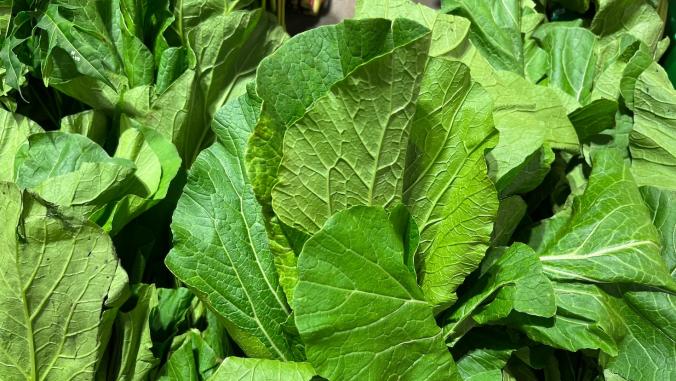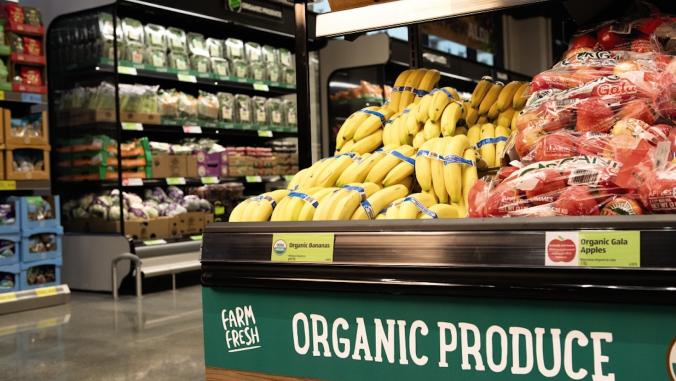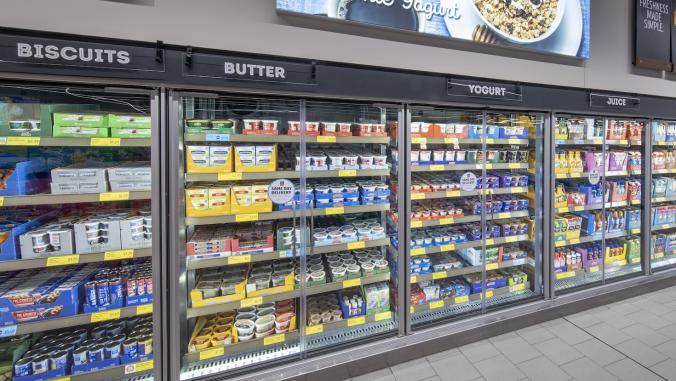During GreenBiz’s VERGE 21 conference last week, conversations surrounding the food sector and its goal for reducing carbon emissions kept intersecting at one key point — the supply chain.
"All of these commitments are going to be cascaded into the suppliers," Julia Salant, head of sustainability innovation at EcoVadis, a sustainability ratings company, said during a VERGE 21 session on tracking carbon. "All of this will need to be translated into action within supply chains."
But supply chains for food products are inextricably complicated. Every ingredient in a food produced starts at an individual farm and can have many links until it gets to the retailer including passing through a processor, packaging middle man and a branded wholesaler. Knowing every input and output will be key to making the millions of tiny changes that lead to emissions savings.
"Some organizations don’t have transparency down to the farm gate, because of the commodity exchanges and how supply chains are organized," said Tim Faveri, vice president of sustainability and shared value at Maple Leaf Foods, a packaged meat company in Canada. "So collaborating with other partners is going to be really, really important."
He emphasized the importance of working with companies that are upstream of the farmer, such as a fertilizer company, to encourage meaningful change from both sides.
Food executives know that the key to reducing their companies’ emissions lies in the data, transparency of and improvement in their supply chains. But an audience member at VERGE 21 brought up how the many requests for data and formats are a huge burden on the suppliers.
Your Scope 1 is someone else’s Scope 3.
"Every company has its own dream questionnaire," answered Jason Kibbey, CEO of Higg, a supply chain management and measuring company. "We need to do a much better job because there’s just too much data collection out there. We need to focus on impact and we need smart ways to make that data collection easier."
During the session, Kibbey reached out to fellow panelist Salant to suggest creating a standardized questionnaire that fulfills most of that dream one, so then suppliers would only need to fill in the gaps, removing duplicate work.
As grocery stores sit at the nexus of consumers and suppliers for food, they have a huge influence on what supply chains look like and can force suppliers to adhere to certain sustainability standards, according to Charlotte Linnebank, co-founder and executive director of Questionmark, a nonprofit focusing on researching healthy and sustainable food production. Even with suppliers that might be hesitant or feel they can’t do enough.
"Sometimes a supplier is nervous to share information because maybe they’re not doing that much in the space," said Chris Brooks, director of sustainability at Walmart. "But then I’d explain that it’s better to show you’re starting the journey than you’re not on the journey at all."
Brian Lipinski, an associate in the food program at the World Resources Institute, outlined that supermarkets should be following in the footsteps of Tesco and Walmart, which use their scale to encourage suppliers to make more sustainable choices.
These big players have the resources and contacts for extensive vertical collaboration and communication.
Brooks’ dream, if he had a magic wand, is to get all Walmart’s suppliers in the same room because as Kibbey said, "your Scope 1 is someone else’s Scope 3."
Even food waste, which accounts for 8 percent of greenhouse gas emissions each year, is partly a supply chain issue, according to Lipinski.
"If a producer, for example, is not using proper storage techniques, that food might end up having a shorter shelf life because of what happened upstream, but then the waste shows up at that retail level," he said. "Different segments of the supply chain can influence each other but you only have control over what happens in your own boundaries."
That is, unless you form strong partnerships at scale all the way down the supply chain. Strong partnerships can address more than just food waste. By working with millions of farmers, food companies can start to make a dent in carbon emissions.
"For farming and agriculture to be a big impact in climate change, it has to be a large acreage, because sequestration rates per acre are relatively low," Emma Fuller, science lead for carbon and ecosystem at Corteva AgriScience, a major player in the American agricultural chemical and seed industry, said during a VERGE 21 session on working with farmers to achieve net zero.
There are 282 million acres of row crop production in the U.S., according to Fuller. Partnering with farmers by educating them about carbon sequestration, making data collection understandable and creating an economic benefit for switching is the only way to bring regenerative agriculture onto all those acres.






